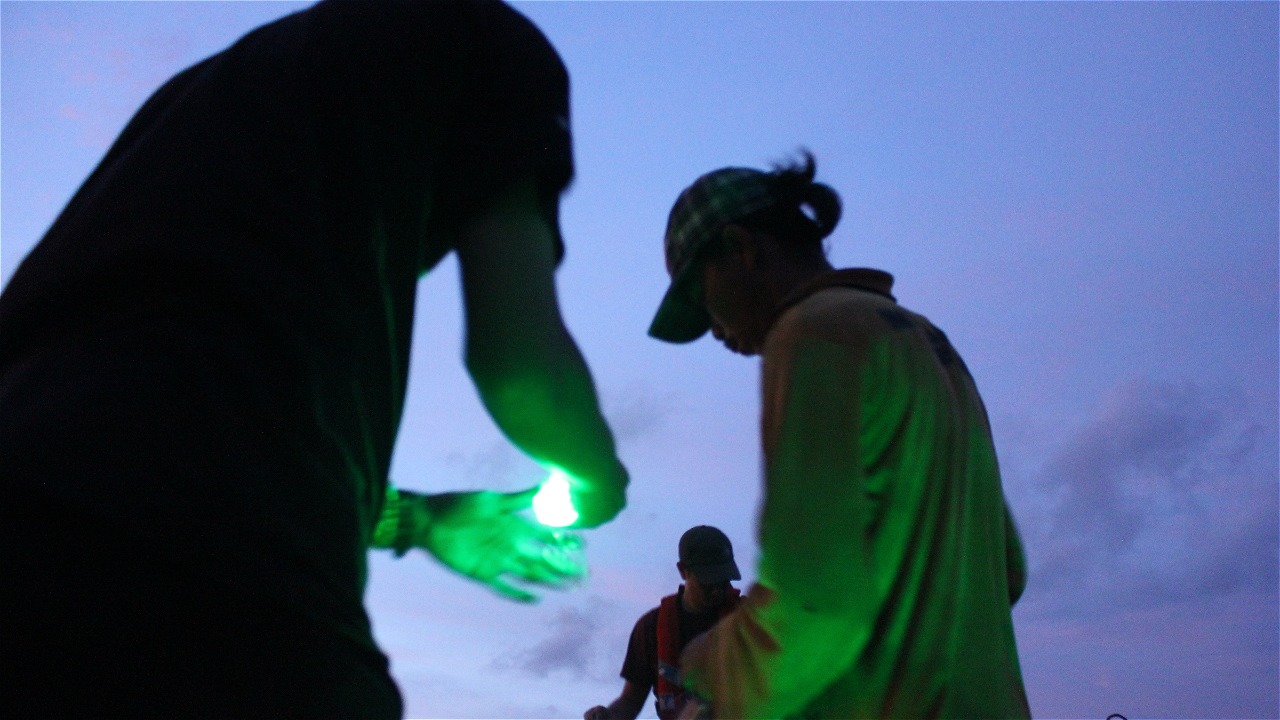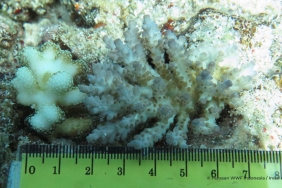REDUCE BYCATCH, GREEN LED IS THE SOLUTION
By Dwi Ariyoga Gautama
Following the planned trial use of LED lights last October, representatives of Paloh fishermen, Sambas Regency DKP, the Ministry of Marine Affairs and Fisheries (MMAF), and WWF are together eager to prove the effectiveness of these lights in reducing turtle bycatch in drift gillnet operations in Paloh waters, Sambas Regency.
Starting with data collection training and discussion of the technical plan for the operation of LED lights on April 11, 2014, according to the plan, the trial will be carried out on drift gill nets with monofilament material that has been knitted at 3 mesh sizes (mesh size) namely 5.5', 6.5' and 8' which will be given a green LED light every 10 m of the net. Data collected includes information on gear operation, catch and selling price recorded by the observer on the boat and when the fish is sold to a shop or collector in the local language.
LED Tested
Practical operations were carried out the next day for three days (April 12-14, 2014) by dividing the team into two which were placed on 2 boats captained by Mr. Pendidan and Mr. Asmadi. On the first day, the team recalculated the length of the net at each mesh size and marked every 10 m to make it easier to place the LED lights. The net was released about 1-2 km from the shore of Kemuning Beach starting at 17.05 WIB and started to be pulled back at 20.05 WIB. During those 2 hours, there were at least three Olive Ridley turtles (Lepidochelys olivaceae); two were entangled in Mr. Asmadi's net and one in Mr. Pendi's boat net. This is certainly detrimental to fishermen with damage to their nets.
The next day, the two fishermen spent time repairing the damaged nets either due to turtle bycatch or nets caught on wood and cut off by the propellers of other boats, while the data collection team consisting of observers and students from the Jakarta School of Fisheries (STP) who were conducting their final research used the time to discuss the next plan while trying to fill in the catch data using the Akvo Flow application on tablets that has been developed by WWF in recent months.
It was agreed that on the second day the green LED lights would be used on Mr. Pendi's net, while Mr. Asmadi's net was used as a comparison (control) to see the effectiveness of using these lights, as well as providing hands-on practice of installing and removing LED lights on the boat. The initial trial installation took at least 1.5 hours longer than the installation without LED lights, but this is still understood by the fishermen and can be accelerated if they are used to it. When the nets were pulled, Mr. Asmadi's net returned with one Olive Ridley turtle, while Mr. Pendi's net with green LED lights did not get any turtles. This initial experiment was quite encouraging to the fishermen, but due to poor water conditions the catch from these two boats was not too much.
On the last day we returned to Liku harbor, Paloh, to sell the catch.





